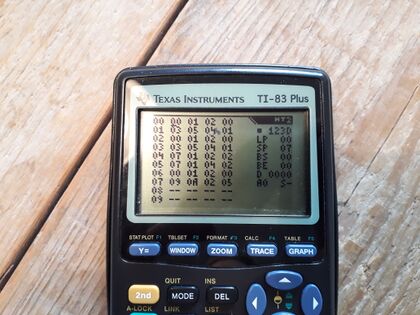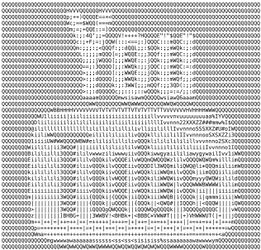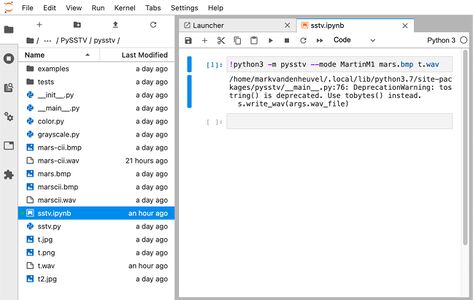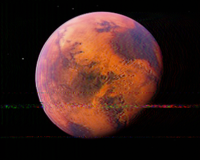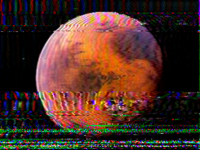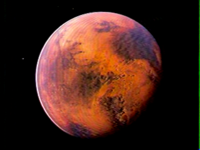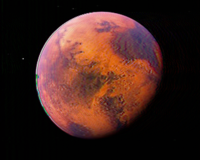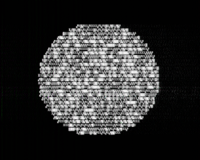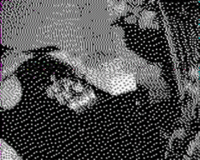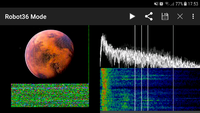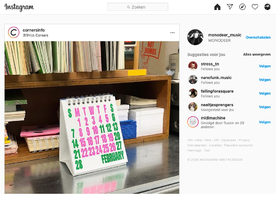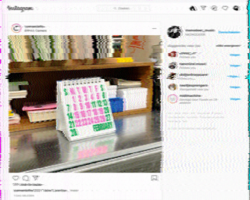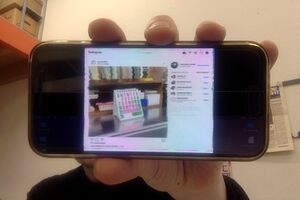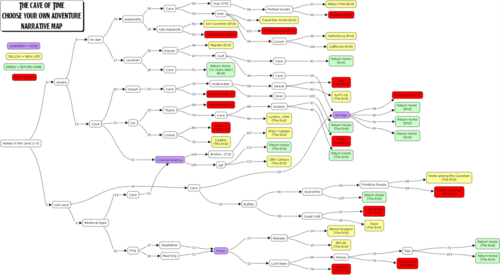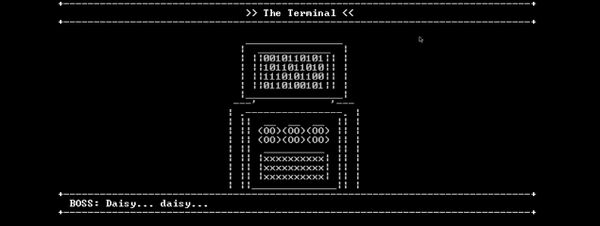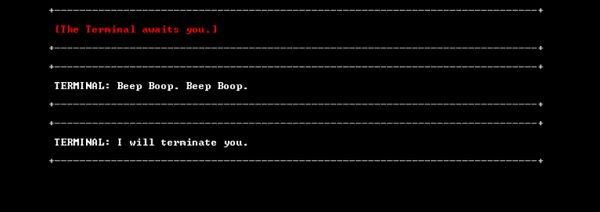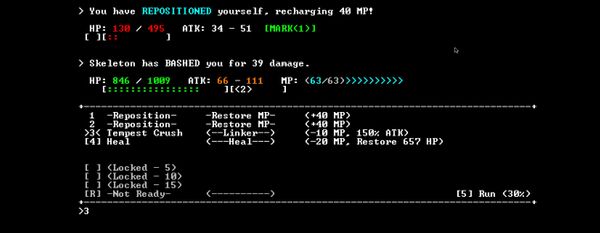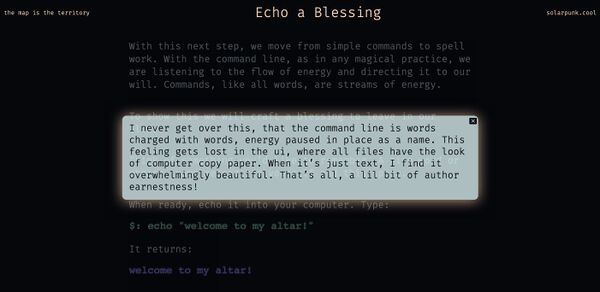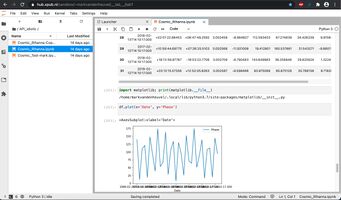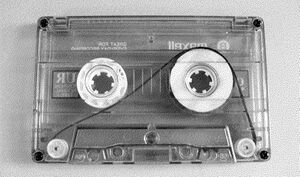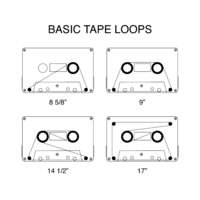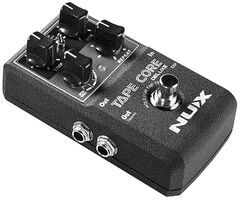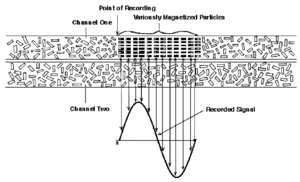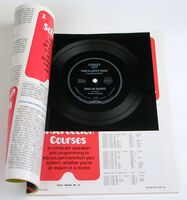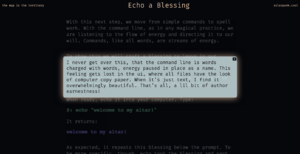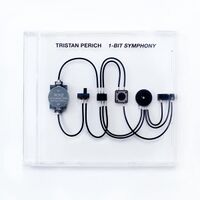User:Markvandenheuvel/prototyping hackpacts
Hackpacts: "home school prototyping"
Prototypes and experiments so far:
- 1-Bit sound synthesis (making music on a 'hacked' TI calculator)
- KCS workflow: txt input > generated text > KSC audio > HTML
- AALIB experiments + Ascii (quilting): images converted to ascci via a generator in Python
- SSTV workflow tests in Python: modulating images (sending/receiving – encoding/decoding, storing on tape)
- IRC bot experiments: (Urzaloid Franklin)
- API scraping(Planetary NASA data mixed with other sources)
- A)PART to de(PART PY.RATE.CHNC workshop: collaborative tape loop creation and recording (materiality of magnetic tape, deconstruction of sound, sonic fiction)
- interactive fiction + text based interface writing en generating text based on input.
__ __ ______ ___ ___ _______ ________ ______ __ __ ______ ______ ___
/" | | "\ / " \ |" \ /" | /" "| /" )/" _ "\ /" | | "\ / " \ / " \ |" |
(: (__) :) // ____ \ \ \ // |(: ______)(: \___/(: ( \___)(: (__) :) // ____ \ // ____ \ || |
\/ \/ / / ) :)/\\ \/. | \/ | \___ \ \/ \ \/ \/ / / ) :)/ / ) :)|: |
// __ \\(: (____/ //|: \. | // ___)_ __/ \\ // \ _ // __ \\(: (____/ //(: (____/ // \ |___
(: ( ) :)\ / |. \ /: |(: "| /" \ :)(: _) \ (: ( ) :)\ / \ / ( \_|: \
\__| |__/ \"_____/ |___|\__/|___| \_______)(_______/ \_______) \__| |__/ \"_____/ \"_____/ \_______)
_______ _______ ______ ___________ ______ ___________ ___ ___ __ _____ ___ _______
| __ "\ /" \ / " \(" _ ")/ " \(" _ ")|" \/" ||" \ (\" \|" \ /" _ "|
(. |__) :)|: | // ____ \)__/ \\__/// ____ \)__/ \\__/ \ \ / || | |.\\ \ |(: ( \___)
|: ____/ |_____/ )/ / ) :) \\_ / / / ) :) \\_ / \\ \/ |: | |: \. \\ | \/ \
(| / // /(: (____/ // |. | (: (____/ // |. | / / |. | |. \ \. | // \ ___
/|__/ \ |: __ \ \ / \: | \ / \: | / / /\ |\| \ \ |(: _( _|
(_______) |__| \___) \"_____/ \__| \"_____/ \__| |___/ (__\_|_)\___|\____\) \_______)
1-bit music: TI-83+ calculator experiments
I came across an open-source project that makes it possible to 'hack' old Texas Instruments calculators and turn them into 1-bit music composing tool (instrument). The program ([Houston Tracker)] is still not being used so much and remains quite obscure. HT2 converts the binary output of the TI-calculator to generate 1-bit sound. What I think is really interesting is that 1-bit sound represents the on/off binary basics of computing. The 1-bit sound is therefore close to the inner process.
Key points
- 1-bit music programming and playback (using Houston Tracker II by UTZ)
- materializing binary data + sound of the CPU (on/off)
- recording on cassette tape: analog processing of digital information
- the benefits of working with limitations
- 'Zombie media': reappropriation of obsolete tech and explore it's potential instead of discarding it: what does it mean?
- implement it in today's workflow (audio/visual, programming, etc)
playful ideas & potentials to further explore:
- 1-bit sound publication
- implementing graphics: bitmaps
- How to embed this in a modern context? What's the use?
- BASIC programming language
- 1-bit sound publication
To spread this project and both music, I thought about making a publication/release/demo in one.
- write a 4 track album for it and release it on a TI-83.
- People that buy it would receive a TI with the tracks on it (collected from thrift store / Marktplaats)
- mail it to people
- way to get started 'hands-on
- See how tracks were produced might get people started
- enlarge interest, spread the word & expand community?
This way, the public can not only listen but also directly engage and get their hands dirty if preferred. What I also think is interesting that in contrary to making music with the sound chip of obsolete gaming consoles is that it's much further detached from retro aesthetics. So it focuses much more on the tech part and thinking how to use this device otherwise.
links & Resources
- TILP: open source program for memory flashing on TI
- Houston Tracker 2: https://www.irrlichtproject.de/houston/houston1/index.html
- DOORS GUI: https://dcs.cemetech.net/index.php/Doors_CS_7_Scratchwork
- graphics: https://www.ticalc.org/pub/win/graphics/
- 1-bit synthesis paper: https://www.gwern.net/docs/cs/2020-troise.pdf
- 1-bit synthesis techniques: https://phd.protodome.com/#anchor-pulse-width-sweep\
- Graphlink cablefor converting binary data to sound: https://www.amazon.com/Texas-Instruments-94327-Graphlink-USB/dp/B00006BXBS
KCS: digital data standard explorations
KCS or Kansas City Standard was developed to convert code (in the form of ASCII text) into sound so it could be stored on media such as magnetic tape but became also suitable to broadcast over radio. This way, its data became more easily interchangeable. KSC is still being used today to restore large quantities of archival material that was stored on magnetic tape. There are other standards that are closely related to this standard. KCS was an attempt to standardize (For instance, the Commodore 64 had its own method however this was very much prone to errors.)
Key Points
- KCS workflow setup in Python (Jupyter Notebook) (text input > generated text > KSC audio > HTML)
- slow data transmission / image arise line by line
- materiality of data via sound (physical connection, embodiment of a process)
- deconstruction: encoding/decoding
- storage and playback (on audio cassette)
playful ideas & potentials to further explore
- bot that outputs encoded texts via audio
- bot that outputs encoded ASCII art (ASCII IMAGES) via audio
- printing out text receipt printer
- creating a modern Flexi Fisc Floppy Rom: https://en.wikipedia.org/wiki/Kansas_City_standard#/media/File:FloppyRom_Magazine.jpg
resources
- KCS standard: https://en.wikipedia.org/wiki/Kansas_City_standard
- Storing https://www.instructables.com/Storing-files-on-an-audio-cassette/
- future of data storage: https://spectrum.ieee.org/computing/hardware/why-the-future-of-data-storage-is-still-magnetic-tape
- Data Files on Tape (A Modern Attempt) https://youtu.be/muJDUonIOz8
AALIB + ASCCI generating experiments
ASCII art is a graphic design technique that uses computers for presentation and consists of pictures pieced together from the 95 printable (from a total of 128) characters defined by the ASCII Standard from 1963 and ASCII compliant character sets with proprietary extended characters (beyond the 128 characters of standard 7-bit ASCII). The term is also loosely used to refer to text-based visual art in general. ASCII art can be created with any text editor, and is often used with free-form languages. Most examples of ASCII art require a fixed-width font (non-proportional fonts, as on a traditional typewriter) such as Courier for presentation.
AAlib is a software library that allows applications to automatically convert still and moving images into ASCII art. It was released by Jan Hubicka as part of the BBdemo project in 1997.

Ascii planet renders in Python
SSTV (Slow Scan Television) experiments
SSTV or Slow scan Television – originally invented as an analog method in the late '60s but accessible to the public in the early 90s when the custom radio equipment was replaced by PC software – is a protocol for sending images over audio frequencies. The sound holds the information of what color where to place, line by line. This way, the image is slowly generated when decoding the audio in real-time. This method is still used today by the HAM amateur radio community for sending and collecting images. Next to that, the International Space station (ISS) still sends images to planet earth this way. The way SSTV generates images is closely related to the material process of digital printing on paper.
SSTV Workflow experiments
Signal published on website:
https://hub.xpub.nl/sandbox/~markvandenheuvel/
Key points
- modulation: protocol/standard to send images over radio
- workflows and experiments using Python3 and bash in Jupyter Notebook
- exploring the materiality of data via sound
- 'slow' data transmission (in contrast with invisible processes and speed)
- encoding /decoding: deconstruction of data
- both interests combined: lo-tech graphics & sound!
SSTV Workflow in use: Image to SSTV signal received by phone
SSTV workflow and decoding via app
LISTEN
- Sound file of Mars image(mode: MartinM1: File:Sstv mars.mp3
- Sound file of Mars ascii image (mode: MartinM1) File:Sstv ascii mars.mp3
Instagram to SSTV: Instagrain Broadcasting
[[ https://hub.xpub.nl/sandbox/~markvandenheuvel/results/t.wav Listen to this image ]]
playful ideas & potentials to further explore:
- broadcasting images over Spotify (or 'invade' existing platforms with hidden content?)
- music & SSTV data combined? https://www.youtube.com/watch?v=tJ2X6HmW49E
links & resources:
- boadcasting software: https://www.qsl.net/kd6cji/downloads.html
- Python scripts to convert images to audio: https://pypi.org/project/PySSTV/
- general resources: http://users.belgacom.net/hamradio/sat-info.htm
- RXSSTV: http://users.belgacom.net/hamradio/rxsstv.htm
- SSTV tools (encoding/decoding) http://www.dxatlas.com/sstvtools/
- recent SSTV project: https://hsbp.org/rpi-sstv
- Pictures On Cassette: https://www.youtube.com/watch?v=c38dLDQoRtM
Interactive Fiction/'Text-based' adventure
Hypertext fiction is a genre of electronic literature, characterized by the use of hypertext links that provide a new context for non-linearity in literature and reader interaction. The reader typically chooses links to move from one node of text to the next, and in this fashion arranges a story from a deeper pool of potential stories. Its spirit can also be seen in interactive fiction.
Interactive fiction, often abbreviated IF, is software simulating environments in which players use text commands to control characters and influence the environment. Works in this form can be understood as literary narratives, either in the form of interactive narratives or interactive narrations. These works can also be understood as a form of video game,[1] either in the form of an adventure game or role-playing game. In common usage, the term refers to text adventures, a type of adventure game where the entire interface can be "text-only",[2] however, graphical text adventures still fall under the text adventure category if the main way to interact with the game is by typing text.
Due to their text-only nature, they sidestepped the problem of writing for widely divergent graphics architectures.
Tutorial with David Moroto: https://www.davidmaroto.info/
What is your content?
- speaks to my heart (fiction)
- source: emotional investment
- solve the coldness of the medium!
- dept! (true for me, fiction for other)
- 'conversational tool' between the analog and digital
- tool of mediation
Inspiration
SanctuaryRPG - (Classic Text Adventure Game)
Inspiration: Solarpunk: The map is the territory
Inspiration regarding tone of voice: Shadow Wolf Zine (ASCII zine by musician Legowelt about various topics)
Resources & links
- Shadow Wolf ASCII Zine by Legowelt
- The map is the territory: Command Line instruction by Solar Punk
- https://en.wikipedia.org/wiki/Interactive_fiction
- https://en.wikipedia.org/wiki/Hypertext_fiction
- https://en.wikipedia.org/wiki/Text-based_game
- https://en.wikipedia.org/wiki/Ergodic_literature
PI: Selfhosting IRC + bot + API scraping
https://pythonspot.com/building-an-irc-bot/
Urzaloid Franklin: bot based on Wikipedia page Ursula Franklin's https://en.wikipedia.org/wiki/Ursula_Franklin
Sandbox as a publication
- showing where it is! (this is where you are!)
- what happens when you visit (exposing a process with the emphasis on materiality)
resources:
- shell: showing processes! https://github.com/jupyter/terminado
- https://pythonspot.com/building-an-irc-bot/
- https://almanac.computer/
Tape + analog sound/recording experiments
Deconstruction workshop: materializing data over sound
- recording sound of a deconstruction process: transfer to the physical carrier (analog tape)
- recording data of images: broadcast SSTV signal
- material combined in audio-visual performance
>WORKSHOP: A)PART_to_de(PART (In collaboration with Tisa Neža and Ioana Tomici)
Performance:
>>>>>>>C0/\/\/\/\0N F/\CT0R<<<<<<<
Related:
- 'wacky tech' (low and obsolete tech processes )
- what meaning emerges when low-tech meets high-tech
- regaining autonomy and the value of misusing technology
- revealing inner workings (trough sonification of a process)
- obsolete systems as a method (not retro!)
- the affordances of not emulating
- "sonic fiction"
- meaning that occurs when going between formats
general links:
- https://www.westminsterpapers.org/articles/10.16997/wpcc.209/print/
- https://www.electronicdesign.com/industrial-automation/article/21808186/sending-data-over-sound-how-and-why
- https://spectrum.ieee.org/computing/hardware/why-the-future-of-data-storage-is-still-magnetic-tape
- http://screenl.es/slow.html
Project content: interim conclusion
_ (_)
____ ____ ___ ____ _ _ ____ ____ ___ ____| |_ _ ___ ____
/ _ | / ___) _ \| _ \ | | / _ )/ ___)___)/ _ | _)| |/ _ \| _ \
( ( | | ( (__| |_| | | | \ V ( (/ /| | |___ ( ( | | |__| | |_| | | | |
\_||_| \____)___/|_| |_|\_/ \____)_| (___/ \_||_|\___)_|\___/|_| |_|
_ ___
| | _ / __) _
| | _ ____| |_ _ _ _ ____ ____ ____ | |__ ___ ____ ____ ____| |_ ___
| || \ / _ ) _) | | |/ _ ) _ ) _ \ | __) _ \ / ___) \ / _ | _) /___)
| |_) | (/ /| |_| | | ( (/ ( (/ /| | | | | | | |_| | | | | | ( ( | | |__|___ |
|____/ \____)\___)____|\____)____)_| |_| |_| \___/|_| |_|_|_|\_||_|\___|___/
Project contents
- inner workings and processes of data modulation explained
- hyperfocus on detailed information regarding processes mixed with fictional elements (metaphors and inspiration from a 'guide')
- user can interact: sending > receiving information (real-time encoding / decoding)
Practical
- text-based / command-line style interface: to create a focus on other senses
- ASCII as image, code, sound: in between formats
- website, Python, on a Raspberry Pi.
Tone of voice of the interface:
- interactive fiction and text-based games (imagination!)
- tone of voice: speaking on a personal level
- Sonic Fiction / Matters Fiction: notion of 'planetary importance'
- - "Welcome to my home. You are here:" <showing pi in my house>
- - "You traveled a long way to get here in a very short time""
- - "You just looked outside through a window, staring at the screen again, you think about the past."
- - "Lately, I often got asked if I am a robot. Are a robot. Are you a robot?"
- - "As a kid, I used to record the sound of games instead of playing them: let me show it to you"
Output
- website (publication) hosted on a Raspberry Pi as publication
- part of the workflow will be used for audio/visual performance based on modulation of data (magnetic tape)
Inspiration taken from tape recordings of:
- 'Alfa Training' course for motivation, regaining autonomy, and confidence to make life and work decisions
- software (detail: music snippets of music in between)
- recording of computer course: 'How to get online?' (mechanical typing sounds, registration)
- guide/course: leader/character, bumpers and theme songs and scores, silence for executing
- blending in personal experiences
|\----/|
| . . |
\_><_/-..----.
___/ ` ' ,""+ \
(__...' __\ |`.___.';
(_,...'(_,.`__)/'.....+

